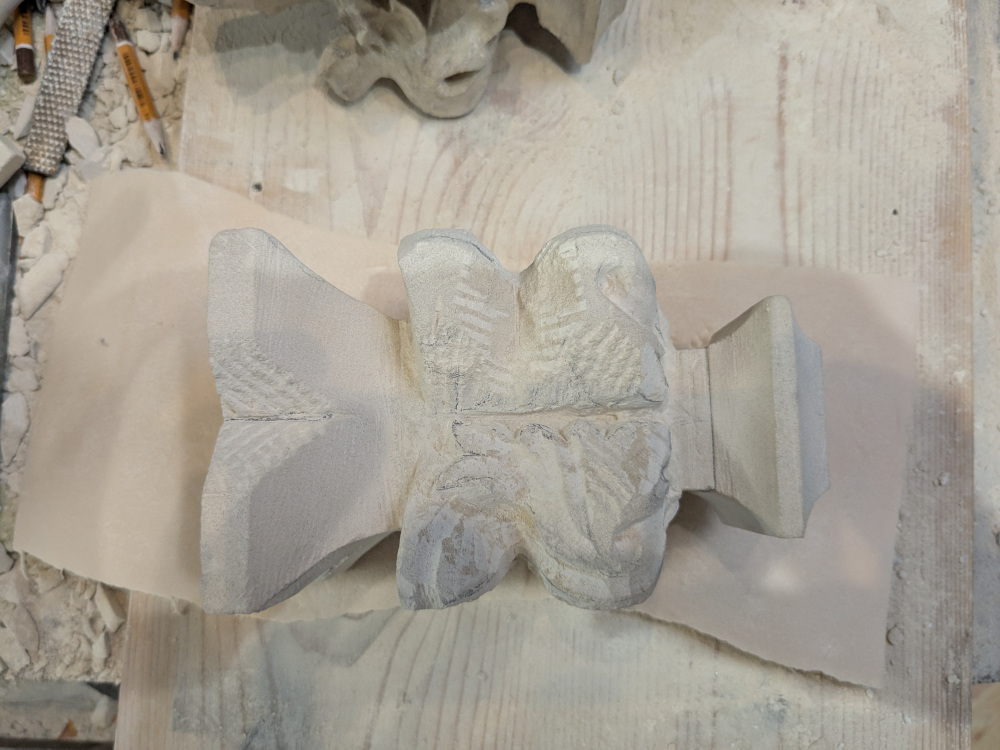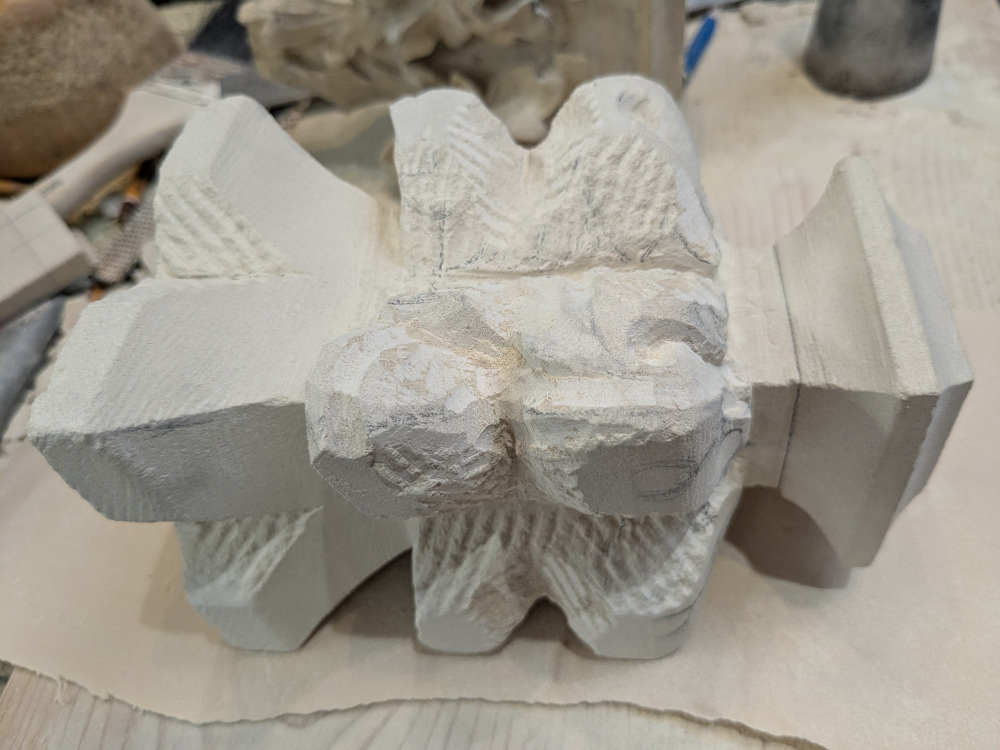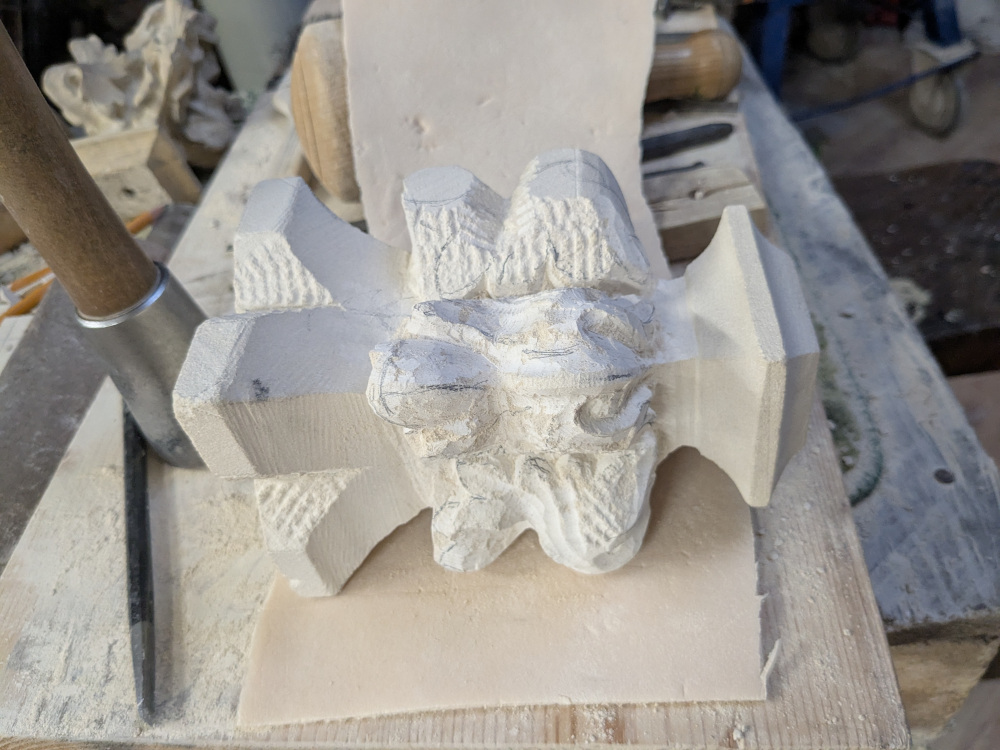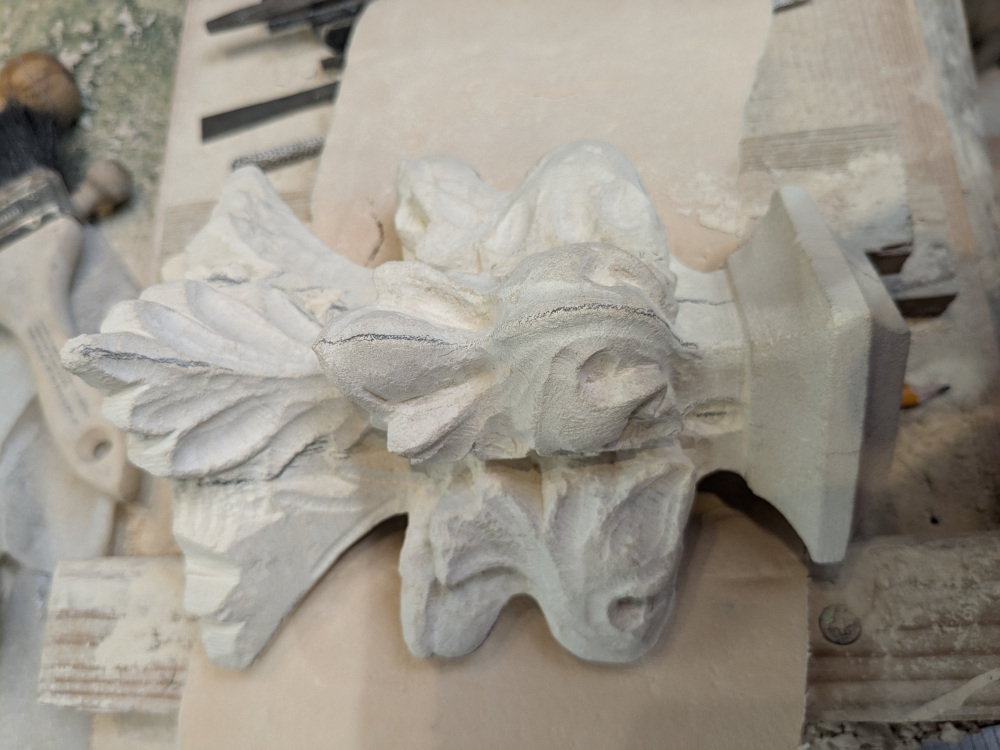A delicate Finial.
25 August, 2025 – 9:00 amI was really excited when a colleague approached me to ask if I could carve a replacement finial for a church he is working on in Rugby.
St Peter’s Church, Grandborough UK
He brought me the delicate carving of an existing one to work from, only 6 inches tall and less that 4 inches square, with a fair amount of detail missing.
I was able to source some Caen stone from the Canterbury Cathedral works-yard. Dense and hard, yet lovely to chisel, saw and sand.




I took some measurements and marked the profile of the base onto the stone.
I used the profile gauge to create a template for the base, the original carving was out of square so I replicated the new one with this in mind.

As there was only one to carve, and there wasn’t a lot of time, I didn’t make a technical drawing, (given more time, I would have done this first). I transferred the measurements directly from the original one and used my knowledge to fill in the missing pieces.






Once I had carved the base, I used this as my datum point so that I could make a template of the shape of the main body of the finial.
I carved the basic features and then drew on the mitre line to create the corners.





The crocketts are organic shapes based on the Acanthus flowers and leaves, this is what gives the finial it’s shape and is used extensively in architecture.



Once I had the basic shape blocked out, I drew on the details of the leaves, making sure that the centre line and the mitre lines remained in place. I used small rifflers to get down to the stone behind the middle of the leaves, so I didn’t damage the base, I put my thumb in the way to protect it.



I moved it from it’s cradle and soft bedding to a basket of sand in order to protect the edges as I got closer to carving the finer details.
Once I was sure I was happy with the carving, I tidied up the edges and added my stonemasons mark.


I had to create the tops of the acanthus leaves using my knowledge of this architectural feature, as you can see from the original, I didn’t have anything physical to work from. The back of the original remained uncarved and it wasn’t even square, so this challenged my knowledge and experience of historical architectural features. I put my stonemason’s mark at the back of the carving, it should be there for many years to come.

I look forward to seeing photos of my carving in situ, the restoration of this Church is being carried out by Adderley Stonemasons, check out their website for more information.
